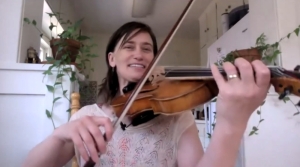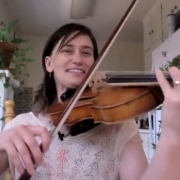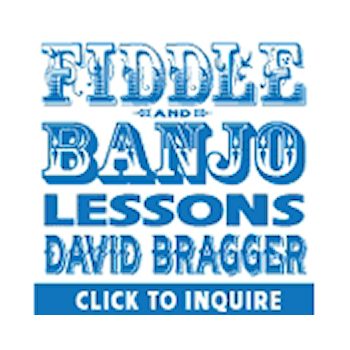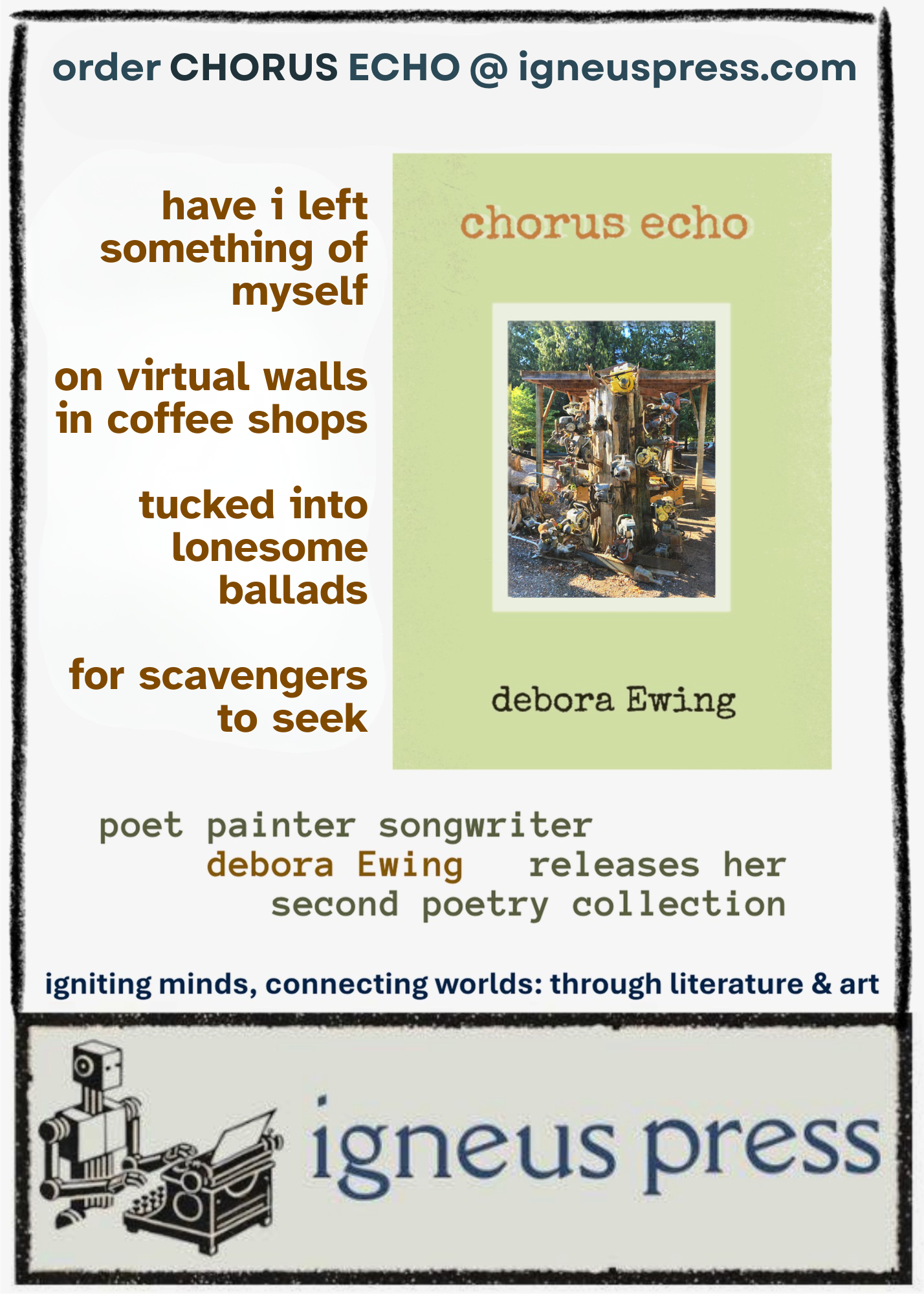Galician Fiddling: A Brief History
 In Spain, for many centuries, the violin was considered a lower class instrument, but in Galicia less so (the two most famous Spanish violinists of the 19th and 20th century – Pablo de Sarasate and Manuel Quiroga, had strong Galician connections). In Galicia, fiddling became the profession of the blind, and blind fiddlers – os cegos – became the primary bearers of news and historical accounts along the last stretch Camino de Santiago that runs from Asturias to Santiago de Compostela in Galicia.
In Spain, for many centuries, the violin was considered a lower class instrument, but in Galicia less so (the two most famous Spanish violinists of the 19th and 20th century – Pablo de Sarasate and Manuel Quiroga, had strong Galician connections). In Galicia, fiddling became the profession of the blind, and blind fiddlers – os cegos – became the primary bearers of news and historical accounts along the last stretch Camino de Santiago that runs from Asturias to Santiago de Compostela in Galicia.
Francisco Franco, the dictator of Spain for nearly 35 years, from 1938 to 1975, made great efforts to homogenize Spanish culture. When Franco died, the Spanish states began to assert their individual characteristics and languages once again.
In Galicia, this resulted in an exploration of Celtic roots. There was a strong belief that the people of Galicia were a Celtic people, and musicians from Galicia began participating in cultural interchange with musicians from the U.K. in an effort to reclaim these “roots.” There was particular focus on the type of tune called the muiñeira, as it bears rhythmic similarity to the double jig. The folk band Milladoiro was one of the most recognized groups in this Spanish Celtic Roots Revival movement, and brought many Irish tunes into the Galician folk scene that are still played at foliadas around the state.
The historical Celtic connection musical connection with Galicia was eventually disproven, but because of the cultural exchange that began in the 1970s, Galicia really has become part of the Celtic music world, and a nice selection Galician tunes are now found in the repertoire of Irish and Scottish sessions in the U.S. and U.K.
While Galician fiddlers have adopted some ornamentation, rhythmic approaches, and arrangement styles from Celtic groups, the music has had its own trajectory. As in Irish and Scottish music, much of the ornamentation on fiddle comes from the bagpipe, which in Galicia is called the gaita. A majority of the tunes that are played at foliadas come from the gaita repertoire. However, as mentioned earlier, fiddlers occupy their own special place in the culture history of Galicia.
By the 1970s the tradition of the blind fiddler (o cego) had nearly died out. Only a few remained, and of those that remained, there is only one fiddler who was ever recorded. Florencio Fernandez Lopez, o cego dos Vilares, wrote or transmitted over 100 tunes and songs that remain in the repertoire today. His style of ornamentation profoundly influenced the way modern fiddlers play. His big-beat approach to bowing, however, has been overshadowed by the strong influence of Irish fiddling on the players in Galicia.
Modern Fiddlers and bands to listen to:
Begonia Riobó – Begonia is a self-taught fiddler in the Galician tradition, and formerly played with the most famous gaita player outside of Galicia, Carlos Nuñez. Milladoiro – Milladoiro was one of the first Galician bands in the folk revival to adopt the model of Irish bands like the Chieftains, and to create a popularized form of traditional Galician music.
Pancho Alvarez. A multiinstrumentalist, Pancho Alvarez’s first album was dedicated to the music of Florencio and is a great place to learn Florencio’s music in a respectfully traditional setting.
Alfonso Franco. Alfonso Franco is a fiddler in traditional Galician style who has taken the US model of fiddle camps and begun to create a thriving fiddle culture in Galicia that includes wonderful camps, a folk orchestra called Sondeseu, and a well-respected folk school in the city of Vigo.
Berrogüetto – Berrogüetto brought new light to the traditional music of Galicia, creating a more contemporary sound for the traditional tunes. Their album Kosmogonías, featuring the golden-voiced pandereita player
Xabier Díaz is one of my favorites. Radio Cós. A trio composed of fiddle, bagpipes/sax, and accordion,
Radio Cos celebrates the rawness of the Galician musical tradition. Their only album to date takes songs collected in field recordings of celebrated pandeireteros and gives them new life, and conveys not just the music, but the atmosphere of life in Galicia.
More information about Galician Fiddling: The Galician Fiddle Style, by Alfonso Franco Vasquez
Interview with Xose Luis Rivas about Pancho Alvarez’ album dedicated to Florencio
Enion Pelta-Tiller epelta@hotmail.com
https://enionmalkah.bandcamp.com/







